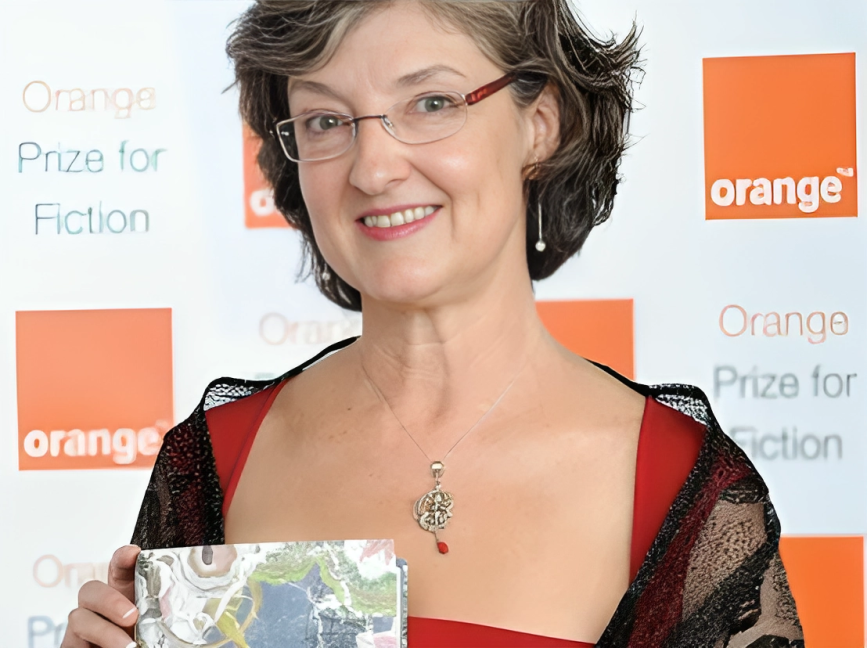Barbara Kingsolver: Net Worth, Bio and More
- 1 Barbara Kingsolver Profile Details
- 2 Where Real Life and Science Converge
- 3 Family And Relationship
- 4 An Honorary Collection of Stories and Social Critiques
- 5 Interests and background in school
- 5.1 Honouring Literary Greatness with Awards and Acknowledgements
- 5.2 Net Worth
- 5.3 Personal thoughts and the effects that have lasted
- 6 The Bottom Line
- 6.1 FAQs
- 6.1.1 Where can I find out more about Barbara Kingsolver?
- 6.1.2 Which of Barbara Kingsolver’s books do you think are her best-known?
- 6.1.3 Has Barbara Kingsolver won any significant awards for her work?
- 6.1.4 There are themes in all of Barbara Kingsolver’s books.
- 6.1.5 How does Barbara Kingsolver’s past change the way she writes?
American novelist, poet, and social activist Barbara Kingsolver wrote The Poisonwood Bible. She began writing in her notebook at eight and became a talented writer. After an average education, she earned a master’s degree in physics but never ceased writing essays and short stories out of passion. While studying, she contributed to the campus magazine and freelanced for a nearby newspaper. After winning a Phoenix newspaper short story contest, her fiction showed her true writing talent. She wrote many critically acclaimed books, articles, short stories, and poems afterwards.
Her speciality is historical fiction, although her scientific expertise means many of her writings incorporate scientific content. Her writing and activism for social justice and environmental protection have been successful in the marketplace and critical community. Her novels have become cult and have been translated into over twenty languages. Her writing continues to inspire, educate, and delight people, and she is still lauded.
Barbara Kingsolver Profile Details
| Aspect | Details |
| Full Name | Barbara Kingsolver |
| DOB | April 8, 1955 |
| Place | Annapolis, Maryland, United States |
| Professions | Novelist, poet, essayist, social activist |
| Spouses |
|
| Notable Works | “The Bean Trees” “The Poisonwood Bible” “Animal, Vegetable, Miracle” |
| Awards and Honors |
|
Where Real Life and Science Converge
To find a balance between her love of study and her natural talent for telling stories, Kingsolver started a string of professional ventures after she graduated. Kingsolver’s many experiences, from editing copies to studying biology, have given her a broader view of the world and made her more sure that all living things are connected and depend on each other. Using her strong scientific background, Kingsolver found her true talent for writing exciting stories that drew readers in while working as a science writer for the University of Arizona magazine.
Kingsolver’s first book, “The Bean Trees,” came out in 1988 and was a turning point in her writing career. The story occurs in a rural part of Kentucky and introduces Kingsolver as a robust new voice in modern literature. It looks at friendship, resilience, and the need to join. As Kingsolver’s writing career took off, she continued to explore the area where science and fiction met. She wrote stories with vivid settings and complicated characters that showed how much she knew about the environment.
Family And Relationship
Barbara Kingsolver, Steven Hopp, and their daughters Camilla and Lily have a delightful family. Environmental scientist Steven Hopp has published and studied some of Barbara Kingsolver’s novels, notably environmental ones, which have been co-authored. Barbara’s parents are Wendell R. and Virginia Kingsolver, and her sister is Karen. Since June 2004, Barbara and her family have lived on a southern Appalachian farm. They keep Icelandic sheep and a large vegetable garden. Barbara believes that being a writer and community member helps her write her best
An Honorary Collection of Stories and Social Critiques
Kingsolver has been a very successful writer for a long time. During that time, she has moved quickly and gracefully between many types of writing and formats. From the long historical epic “The Poisonwood Bible” to the personal pieces in “High Tide in Tucson,” Kingsolver’s writing covers a lot of ground. All of it, though, has her signature mix of poetry and insight. One of Kingsolver’s most lasting literary legacies is her skill at weaving complicated stories that defy easy categorization and convention. Some of her poems, like “Animal Dreams” and “Prodigal Summer,” are very good at exploring how people interact and the delicate balance between people and the world. By using her own life experiences and sharp observations, Kingsolver crafts stories that have deep meanings and universal truths that make readers think about life’s big secrets.
In addition to writing fiction, Kingsolver has become a well-known social commentator. She uses her platform to bring attention to important issues like environmental damage, social inequality, and the loss of human rights. She writes, speaks, and goes out in public to push for positive change. She inspires people to face the most critical problems of our time with belief and courage.
Interests and background in school
Kingsolver loved being outside and reading long, complex stories as a kid. She wanted to write after reading this. Kingsolver was thoughtful and kind because her parents put a lot of value on school. She and her family went to the Democratic Republic of the Congo when she was seven. This event changed her life and made her want to fight for everyone to be treated fairly. She was always ready to learn, even when things were tough. At the end of high school, she looked into colleges and chose DePauw University in Indiana. The first degree Kingsolver got was in biology in 1977, two years after she stopped singing. While he was in school, Kingsolver was against the war. Later, he joined groups that worked for peace and equality when things changed.
Honouring Literary Greatness with Awards and Acknowledgements
Readers, critics, and coworkers agree that Kingsolver has significantly added to the literature. She has won several awards for her work. DePauw University, where she went to school, awarded her an Honorary Doctorate of Letters in 1994 for her writing and artistic achievements. She also won several prestigious awards for her best-selling book, “The Poisonwood Bible,” which was praised worldwide. These included the Orange Prize for Fiction and the National Book Prize of South Africa.
Over the years, Kingsolver has won many awards and displayed them on her wall. Some are the National Humanities Medal, the James Beard Award, and the PEN/Faulkner Award. To honour and encourage young writers whose work deals with issues of social justice and environmental protection, she created the Bellwether Prize for Fiction. This is another way she shows her commitment to promoting positive social change.
Net Worth
Wikipedia, Forbes, and IMDb estimate Barbara Kingsolver’s net worth to be $20 million. The Maryland-born scholar was raised. A successful American novelist has supported herself economically.
Personal thoughts and the effects that have lasted
View this post on Instagram
Kingsolver’s life and experiences have been an inspiration to people all over the world, not just in the literary world. She has been strong and determined in the face of hardship as a mother, wife, and fighter; that makes her who she is. People of all ages and walks of life are interested in Kingsolver because of her public and personal relationships that show empathy, care, and honesty. Once Barbara Kingsolver’s work is over, books and people will never be the same again. Her words and actions are a steady reminder of how important it is to stand up for what we believe in and how stories can change people’s lives. The world is constantly evolving, but Kingsolver’s voice stays strong, whether she’s sharing complicated stories or fighting for the rights of those who aren’t getting enough attention.
The Bottom Line
Barbara Kingsolver’s writing teaches that morality, empathy, and originality are timeless traits that could make a difference in today’s literary world. Her rise from being unknown in rural Kentucky to becoming a literary star is an inspiring story that shows how stories can change lives and how action and kindness can have a lasting effect. Barbara Kingsolver’s work will always have an impact as long as her words and actions continue to captivate readers. It will stand for hope and the endless power of the human soul. Kingsolver’s call for kindness, understanding, and social duty is more important than ever in a world of doubt and conflict. Because of her story, let’s work to change the world one word at a time as we face the problems of our time.
FAQs
Where can I find out more about Barbara Kingsolver?
Barbara Kingsolver was born on April 8, 1955, in Annapolis, Maryland. She has written poetry, stories, and articles, among other things. Her work often explores themes such as social justice, biodiversity, and how people, places, and things affect each other.
Which of Barbara Kingsolver’s books do you think are her best-known?
She is known for writing “The Poisonwood Bible,” “The Bean Trees,” and “Flight Behaviour.” In college, I had to read “The Poisonwood Bible,” a work of historical fiction about a Congolese missionary family. Most of the book’s reviews have been good.
Has Barbara Kingsolver won any significant awards for her work?
The short answer is yes; Kingsolver has won many awards. One of these is the Orange Prize for Fiction, now called the Women’s Prize for Fiction, for “The Lacuna.” Another is the National Humanities Medal.
There are themes in all of Barbara Kingsolver’s books.
Many of Kingsolver’s books are about social justice, the environment, and how people fit into the natural world. Her stories cover many ground and successfully mix personal and political themes. Her characters are strong and likeable.
How does Barbara Kingsolver’s past change the way she writes?
Kingsolver’s work is based on a deep understanding of biology and natural science. Her books are based on real-life environmental issues because they have vivid images of nature and focus on how people’s actions affect the environment.



















